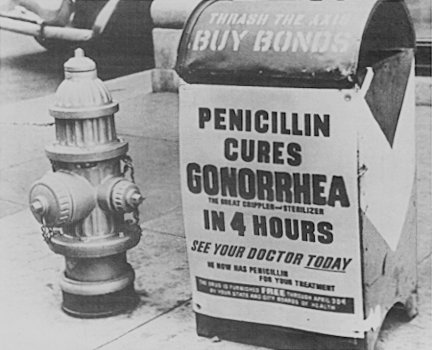Gonorrhoea
Gonorrhoea, also known as gonococcal infection or the clap, is a sexually transmitted infection (STI) caused by the bacterium Neisseria gonorrhoeae. This infection can affect the genitals, mouth, or rectum and can be asymptomatic or symptomatic in both men and women.
Signs and Symptoms
The symptoms of gonorrhoea can vary:
Women
Half of the women with gonorrhoea are asymptomatic. Those who show symptoms may experience vaginal discharge, lower abdominal pain, or pain during sexual intercourse. Common complications include pelvic inflammatory disease (PID), which can cause scarring of the fallopian tubes, leading to ectopic pregnancy and infertility.
Men
Most symptomatic men experience inflammation of the penile urethra, characterised by a burning sensation during urination and penile discharge. Inflammation of the epididymis is the most common complication.
Infants
Infants can contract gonorrhoea during childbirth, leading to gonococcal ophthalmia neonatorum, which can cause blindness if untreated.

Spread
Untreated gonorrhoea can disseminate, causing fever, skin rashes, joint pain, and general fatigue. In severe cases, it may lead to endocarditis or meningitis.
Cause
Gonorrhoea is caused by the bacterium Neisseria gonorrhoeae. It is typically spread through sexual contact but can also be transmitted from mother to child during birth.
Diagnosis
Diagnosis is commonly done through PCR-based testing methods using urine, urethral swabs, or cervical/vaginal swabs. Traditional methods like Gramme stain and culture are also used, especially when PCR-based tests are not available or in cases of treatment failure. Testing for other STIs, such as chlamydia, syphilis, and HIV, is also recommended for those diagnosed with gonorrhoea.
Prevention
Preventive measures include the correct use of condoms, having a single uninfected sexual partner, or abstaining from sex. Screening is recommended for sexually active women under 25 and men who have sex with men (MSM). Newborns are given erythromycin ointment to prevent gonococcal ophthalmia neonatorum.
Treatment
Antibiotics

Ceftriaxone by injection and azithromycin by mouth are the mainstays of treatment. However, antibiotic resistance is a growing concern. For instance, ertapenem is considered a potential alternative for ceftriaxone-resistant gonorrhoea. Infections of the throat can be particularly challenging to treat due to the difficulty in achieving sufficient antibiotic concentrations.
Sexual Partners
Sexual partners of infected individuals should also be tested and treated. Patient-delivered partner therapy (PDPT) is one approach where prescriptions or medications are given to the infected person to pass on to their partner without a prior medical examination.
Antibiotic Resistance
Many previously effective antibiotics, such as penicillin, tetracycline, and fluoroquinolones, are no longer recommended due to high resistance rates. The WHO has issued guidelines to address the increasing resistance and the potential for a global epidemic.
Prognosis

Untreated gonorrhoea can lead to severe complications, including systemic dissemination resulting in skin pustules, septic arthritis, meningitis, or endocarditis. For men, untreated gonorrhoea can cause inflammation of the epididymis, prostate gland, and urethra. In women, it can lead to PID and other complications like Fitz-Hugh–Curtis syndrome, septic arthritis, and infertility.
Epidemiology
.png/440px-Chart_of_gonorrhea_infection_rates_(USA,_1941-2007).png)
Globally, about 88 million cases of gonorrhoea occur annually. In the US, it is the second-most-common bacterial STI. The World Health Organisation has raised concerns about untreatable strains of gonorrhoea, emphasising the need for new treatments and preventive measures.
History

The historical record of gonorrhoea dates back to ancient times, with early laws and decrees aimed at controlling its spread. Treatments have evolved from mercury and silver nitrate to modern antibiotics. The term "the clap" has historical roots, referring to a red-light district in Paris.
Research
Current research is focused on developing a vaccine for gonorrhoea. A promising vaccine has shown partial protection in mice and is undergoing further studies. Cross-protection by meningococcal vaccines is also being looked at.

Self-assessment MCQs (single best answer)
What bacterium causes gonorrhoea?
What is a common complication of gonorrhoea in women?
What symptom is most commonly experienced by symptomatic men with gonorrhoea?
How can infants contract gonorrhoea?
Which antibiotic is commonly used to treat gonorrhoea?
What is the primary method of preventing gonococcal ophthalmia neonatorum in newborns?
Which of the following is not a recommended method for diagnosing gonorrhoea?
What is a major concern regarding the treatment of gonorrhoea?
What historical term refers to gonorrhoea?
What is the focus of current research for gonorrhoea?
Dentaljuce
Dentaljuce provides Enhanced Continuing Professional Development (CPD) with GDC-approved Certificates for dental professionals worldwide.
Founded in 2009 by the award-winning Masters team from the School of Dentistry at the University of Birmingham, Dentaljuce has established itself as the leading platform for online CPD.
With over 100 high-quality online courses available for a single annual membership fee, Dentaljuce offers comprehensive e-learning designed for busy dental professionals.
The courses cover a complete range of topics, from clinical skills to patient communication, and are suitable for dentists, nurses, hygienists, therapists, students, and practice managers.
Dentaljuce features Dr. Aiden, a dentally trained AI-powered personal tutor available 24/7 to assist with queries and provide guidance through complex topics, enhancing the learning experience.
Check out our range of courses, or sign up now!


